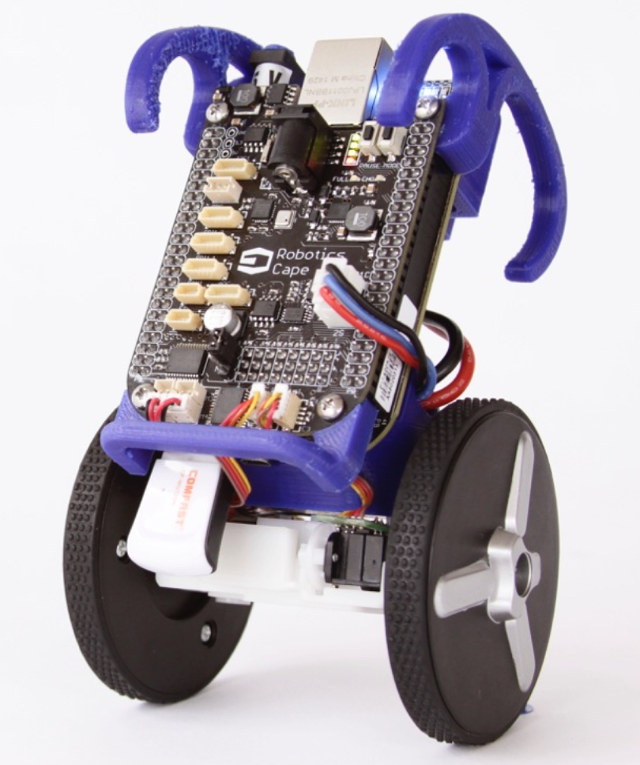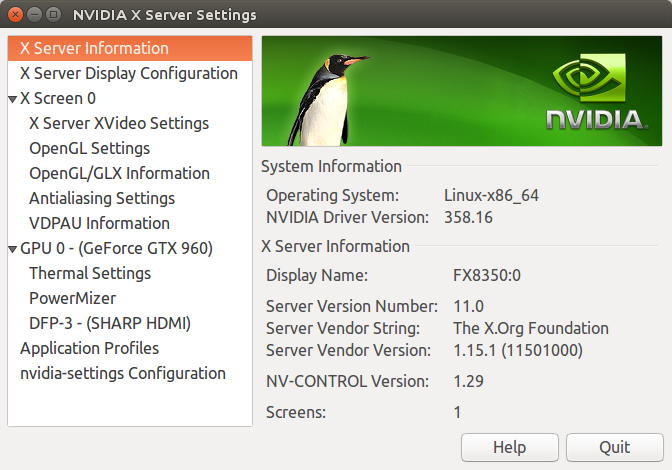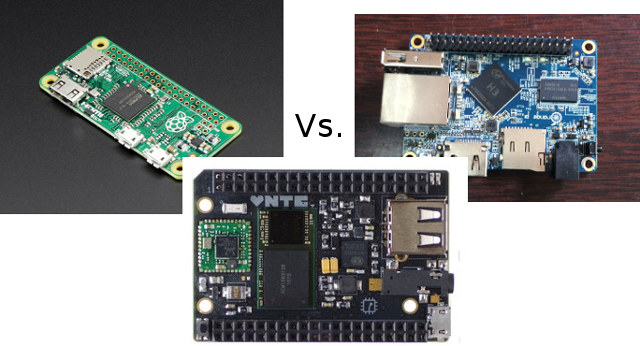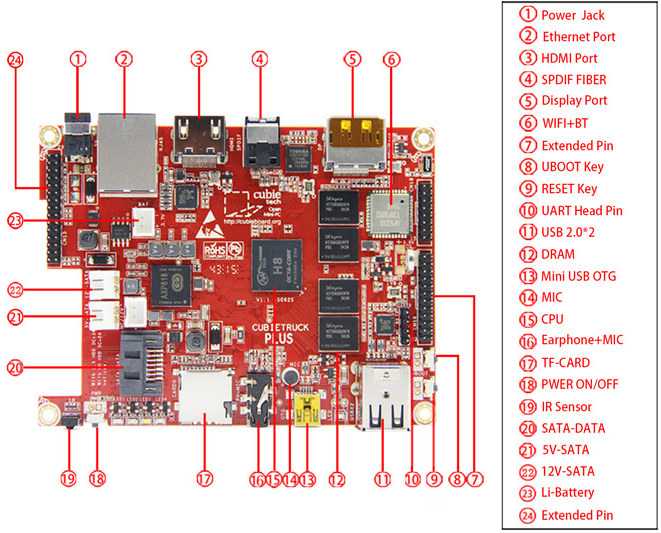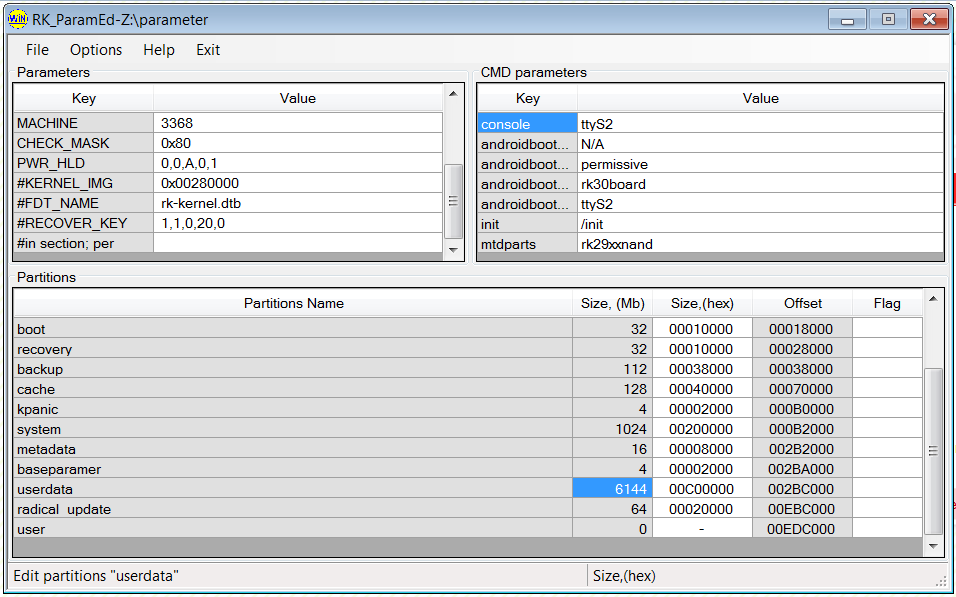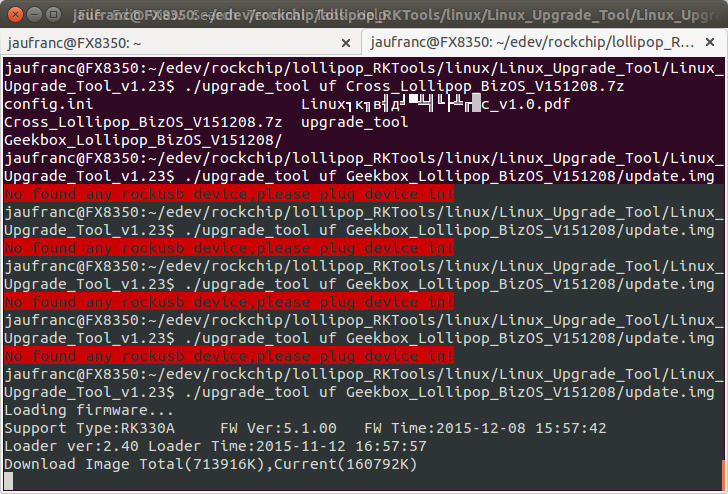Beagleboard.org organization already tried to go Blue with BeagleBone BlueSteel-Basic that was supposed to a the single board computer to be used by OEM to integrate into their design instead of BeagleBone Black development board. For some unknown reasons this never happened, but they’ve now reused the color to introduce BeagleBone Blue board designed for robotics and UAVs. BeagleBone Blue specifications: SoC – Texas Instruments Sitara AM3358 Cortex A8 @ 1 GHz + PowerVR SGX530 GPU System Memory – 512 MB DDR3 Storage – 4 GB 8-bit on-board flash storage Connectivity – 802.11 b/g/n, Bluetooth 4.0 LE USB – USB 2.0 client and host Motor Control – 8x 6V servo out, 4x DC motor out, 4x quad enc in Sensors – 9 axis IMU, barometer “Easy connect Interfaces” – GPS, DSM2 radio, UARTs, SPI, I2C, analog, buttons, LEDs Power / Battery – 2-cell LiPo support with balancing, 6-16V charger input […]
Faster H.265/HEVC Video Encoding with Nvidia GTX960 GPU and ffmpeg
H.265 promises the same video quality as H.264 when using half the bitrate, so you may have thought about converting your H.264 videos to H.265/HEVC in order to reduce the space used by your videos. However, if you’ve ever tried to transcoding videos with tools such as HandBrake, you’ll know the process can be painfully slow, and a single movie may take several hours even with a machine with a power processor. However, there’s a better and fster solution thanks to hardware accelerated encoding available in some Intel and Nvidia graphics cards. For this purpose, GearBest sent me Maxsun MS-GTX960 graphics card, a second generation Maxwell GPU, that supports H.265 accelerated video encoding and promised up to 500 fps video encoding. So I’ve put the graphics card to the test in a computer running Ubuntu 14.04, and reports some of my findings here. Similar instructions can also be followed in […]
Raspberry Pi Zero, C.H.I.P, and Orange Pi One Boards’ Features and Price Comparisons
With Raspberry Pi Zero, Next Thing C.H.I.P, and Orange Pi One, we now have have three ARM Linux development boards selling (now or soon) for less than $10 excluding shipping and taxes. So I’d think it would be interesting to compare the features of the boards, and prices for different use cases. The comparison table below shows the three boards features side-by-side with items highlighted in green for the best or extra features, and in red for the weakest. Some cells will have to be filled later as data is currently not available (marked TBD). Raspberry Pi Zero C.H.I.P Orange Pi One Processor Broadcom BCM2835 single core ARM11 processor @ 1GHz (~1250 DMIPS) Allwinner R8 Cortex A8 processor @ 1 GHz (2000 DMIPS) Allwinner H3 quad core Cortex A7 processor @ 1.2 GHz (4x 2280 DMIPS) GPU VideoCore IV ARM Mali-400 ARM Mali-400MP2 Video Decoding 1080p30 for H.264, MPEG2* and […]
CubieTruck Plus Development Board with DisplayPort & HDMI Sells for $84 (in China)
We first found out about CubieTruck Plus (aka Cubieboard 5) this summer, and while at the time we did not have the full details, it was clear from the board picture and name, that is was an update to CubieTruck board, replacing Allwinner A20 dual core processor by Allwinner A8 octa-core processor, and ditching the VGA port for DisplayPort while keeping most of the same features of the original version. The company has now provided more details while announcing the launch of the board in China, and it turns out CubieTruck Plus has a few more advantages, and at least one drawback. CubieTruck CubieTruck Plus SoC Allwinner A20 Allwinner H8 CPU Dual core Cortex A7 up to 1.08 GHz Octa core Cortex A7 up to 2.0 GHz GPU Mali-400MP2 PowerVR SGX544 up to 700 MHz Memory 2GB DDR3 Power 5V@2.5V power jack Ethernet Gigabit Ethernet (RJ45) WiFi 802.11 b/g/n (2.4 […]
How to Resize Android’s Internal Storage Partition in Rockchip Devices
I installed Light Biz OS firmware on GeekBox yesterday, but I’ve quickly realized many applications such as Gimp Inkscape would not install due to the small 1.94GB “internal partition”, so I asked how to increase the partition size in GeekBox forums last evening, and got an answer overnight from “dewet”. The good news is that it worked so I’ll share the steps I followed in a computer running Ubuntu 14.04. It might also be possible to perform the same tasks within a Windows machine with Rorkchip’s Factory tools First let’s download the utils with relevant scripts and binaries:
|
1 2 |
git clone https://github.com/geekboxzone/utils cd utils/rockdev |
Now copy your device or board’s firmware file “update.img” to the working directory, and unpack it:
|
1 |
./unpack.sh update.img |
The output should look like:
|
1 2 3 4 5 6 7 8 9 10 11 12 13 14 15 16 17 18 19 20 21 22 23 24 25 26 |
start to unpack update.img... ********RKImageMaker ver 1.61******** Unpacking image, please wait... Exporting boot.bin Exporting firmware.img Unpacking image success. Android Firmware Package Tool v1.0 Check file... OK ------- UNPACK ------ package-file 0x00000800 0x000002A6 Loader.bin 0x00001000 0x0003594E parameter 0x00037000 0x000003BF Image/trust.img 0x00037800 0x00400000 Image/uboot.img 0x00437800 0x00400000 Image/resource.img 0x00837800 0x00606400 Image/misc.img 0x00E3E000 0x0000C000 Image/kernel.img 0x00E4A000 0x00D08C4C Image/boot.img 0x01B53000 0x001354E8 Image/recovery.img 0x01C88800 0x00FB4000 Image/system.img 0x02C3C800 0x28D29000 update-script 0x2B965800 0x000003A5 recover-script 0x2B966000 0x0000010A Unpack firmware OK! ------ OK ------ Unpacking update.img OK. Press any key to quit: |
The files will be in the “output” directory. For our purpose “parameter” file, and especially the last line (CMDLINE) where we will want to adjust the userdata partition […]
How to Upgrade Rockchip Firmware in Linux for RK3288, RK3328, RK3368, RK3399, etc..
I’ve been looking for ways to upgrade firmware on Rockchip RK3368 based GeekBox in a computer running Ubuntu 14.04, but while they’ve provided firmware update instructions for Windows, which remains basically the same as upgrading firmware on Rockchip RK3288, there’s no such information for Linux. However, I could remember than Radxa Rock supported upgrade_tool utility, but since the tool linked on Radxa website might be outdated, I instead searched for some RKtools repository on Geekboxzone Github account, and I was lucky enough to find one. Here’s what I did to flash Light Biz OS to GeekBox with my Linux computer: Get the tools, and make sure upgrade_tool is there.
|
1 2 3 4 5 6 |
git clone https://github.com/geekboxzone/lollipop_RKTools.git cd lollipop_RKTools/linux/Linux_Upgrade_Tool unzip Linux_Upgrade_Tool_v1.23.zip cd Linux_Upgrade_Tool_v1.23/ ls -l upgrade_tool -rw-rw-r-- 1 jaufranc jaufranc 3013546 Dec 17 2014 upgrade_tool |
Download and extract the firmware, e.g. Cross_Lollipop_BizOS_V151208.7z:
|
1 2 |
sudo apt-get install p7zip-full 7z x Cross_Lollipop_BizOS_V151208.7z |
Now connect a USB cable to the USB OTG port of your device or board. In case of GeekBox that’s the micro USB port. Now as the board is powered on, keep […]
GeekBox TV Box Unboxing and Development Kit Assembly Guide
GeekBox is both an Android TV box based on Rockchip RK3368 octa-core processor, and a Linux development kit thanks to the CPU module inside the device, a baseboard and various accessories. The company has sent me a review sample, as well as the accessories currently available. So today, I’ll have a look at the box, and show how to connect everything together. GeekBox TV Box Unboxing I’ve received two carton boxes via DHL, one with GeekBox itself, and the other with some accessories. You could use GeeBox has a TV box, and forget about its development attributes, as the device comes with the usual accessories include a case, an HDMI cable, an infrared remote control, and a 5V/2A power supply. I was really surprised by how small it was compared to other 64-bit ARM TV boxes recently launched on the market, and looks very much like a small router with […]
$15 pcDuino3 Nano Lite Board Includes Gigabit Ethernet and a Real SATA Port
I often read people complain about the lack of SATA and Gigabit Ethernet on devices, and following up a discussion on a recent post about QNAP TAS-168 and TAS-268 NAS, I was made aware that pcDuino3 Nano board had a little brother without NAND Flash, nor an IR receiver that’s currently selling for $15 on Amazon US. pcDuino3 Nano Lite board specifications are exactly the same as the other version minus the stricken-through items: SoC – AllWinner A20 dual core ARM Cortex A7 @ 1.0 GHz with Mali 400MP2 GPU System Memory – 1GB DRAM Storage – 4GB NAND Flash, SATA connector and microSD card slot (up to 32GB) Video Output – HDMI 1.4 with HDCP support Audio Out – 3.5mm analog audio interface Connectivity – Gigabit Ethernet USB – 2x USB host, 1x USB OTG Expansion Headers – Arduino UNO extension interface with 14xGPIO, 2xPWM, 6xADC, 1xUART, 1xSPI, 1xI2C. […]


